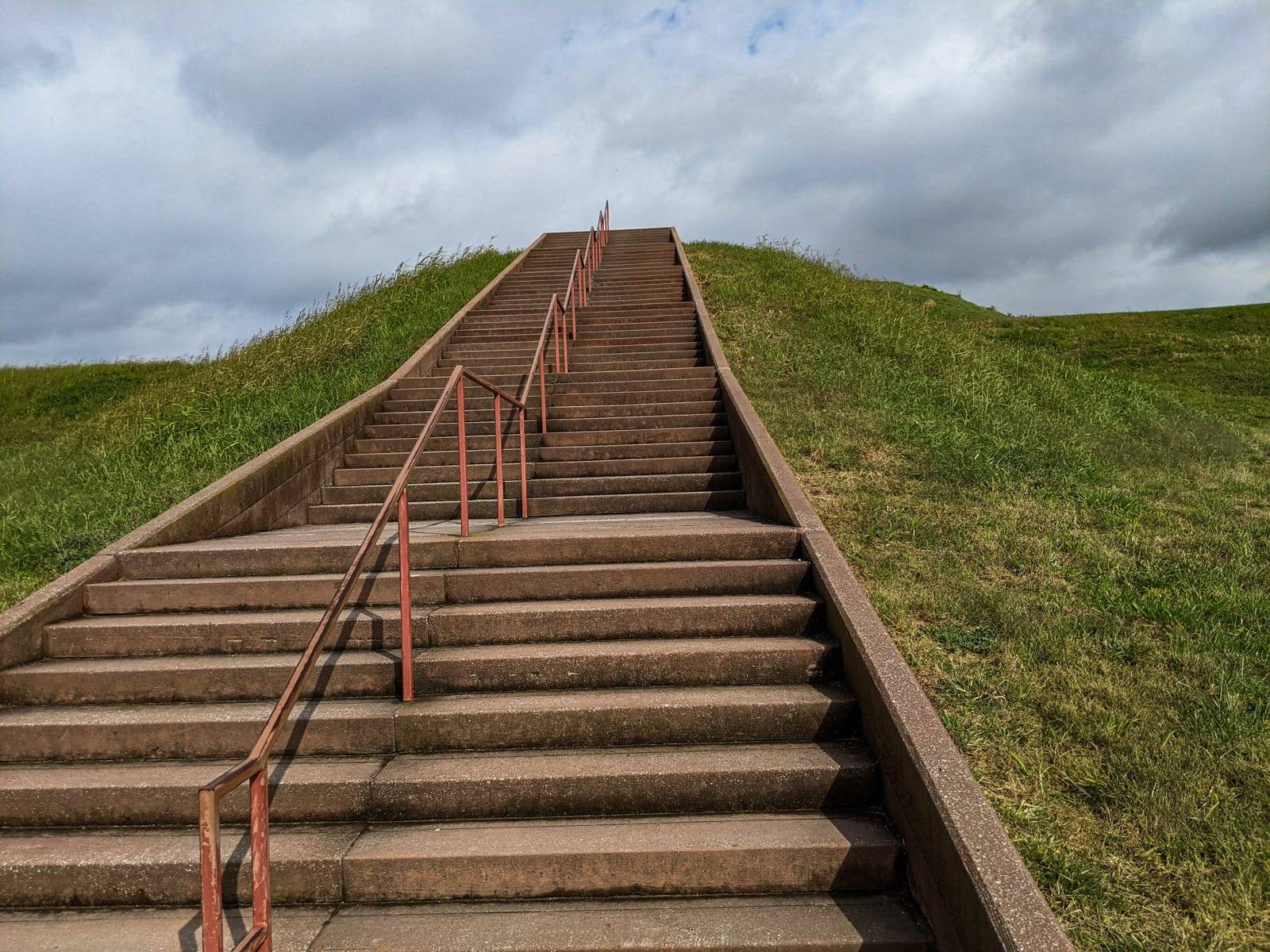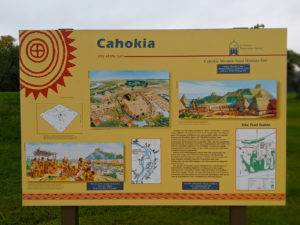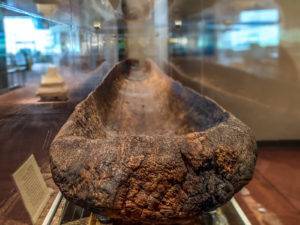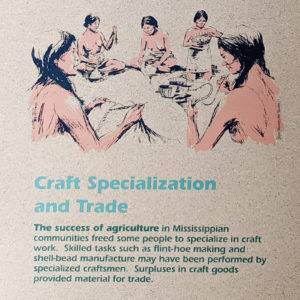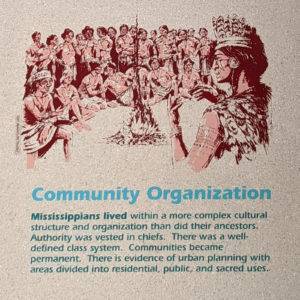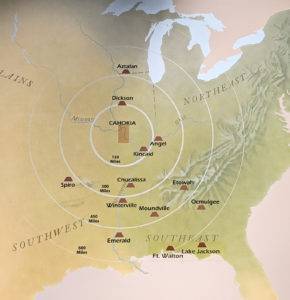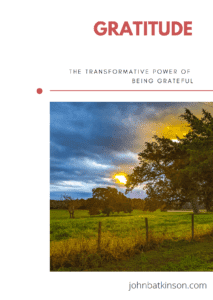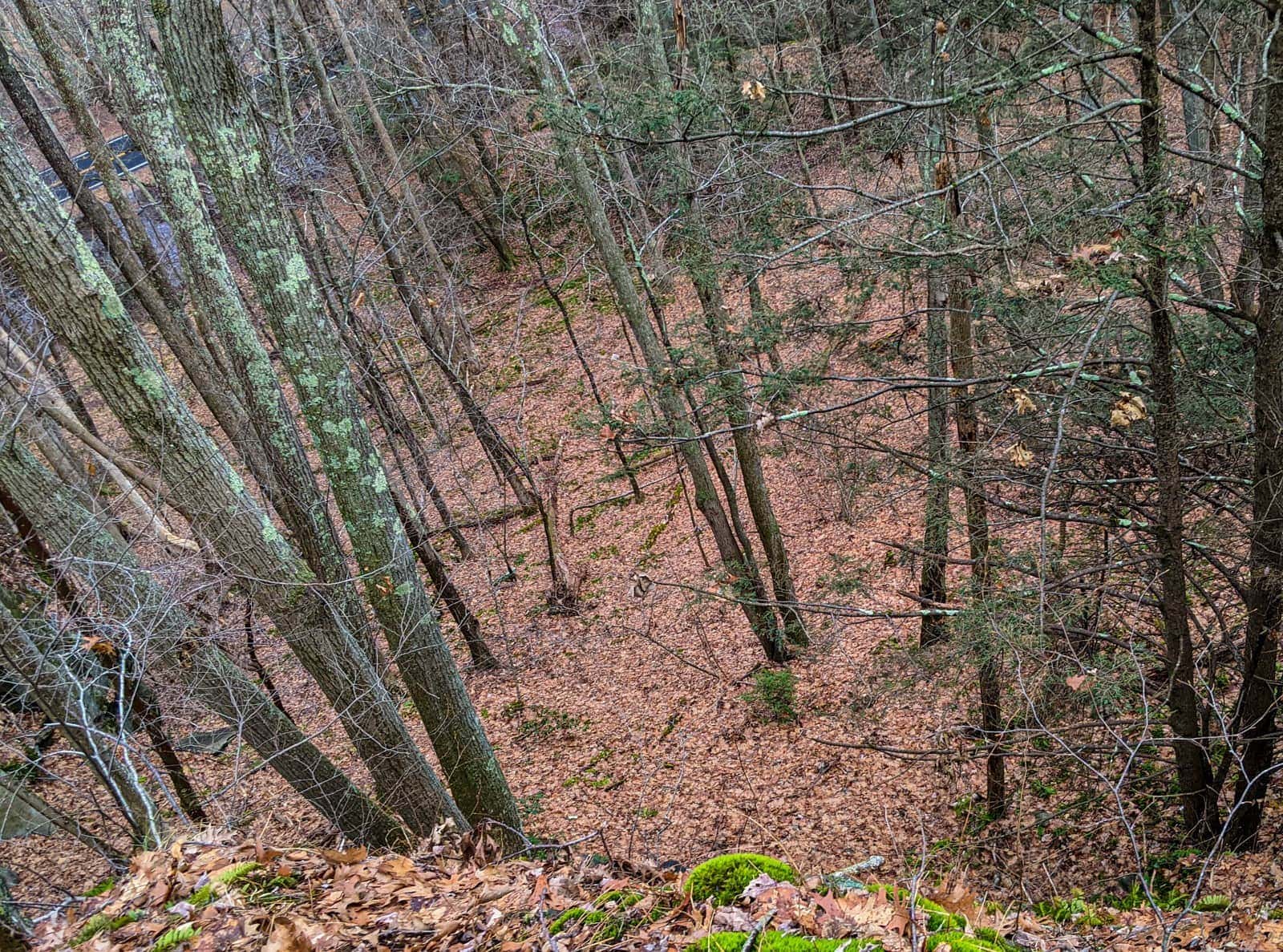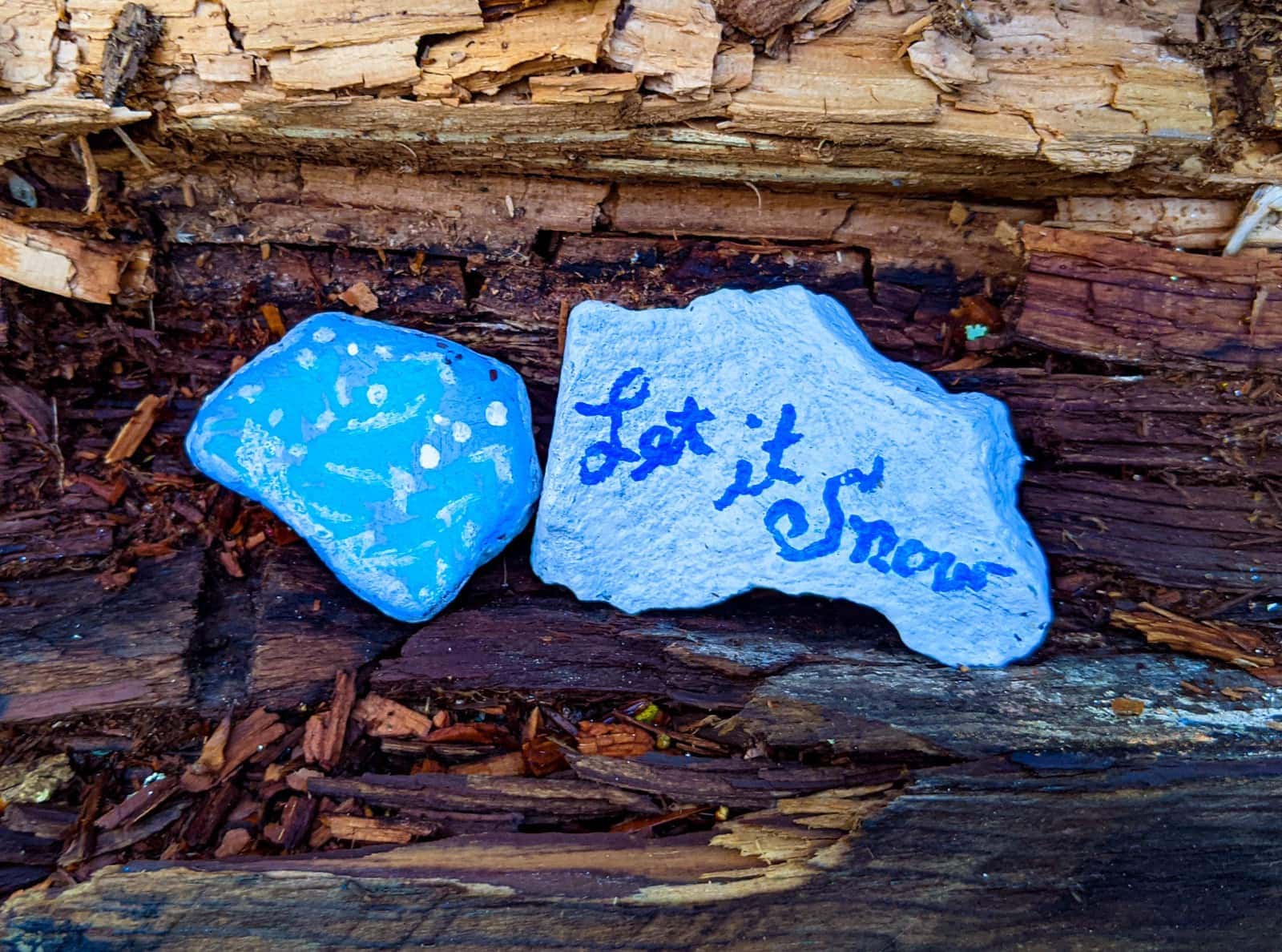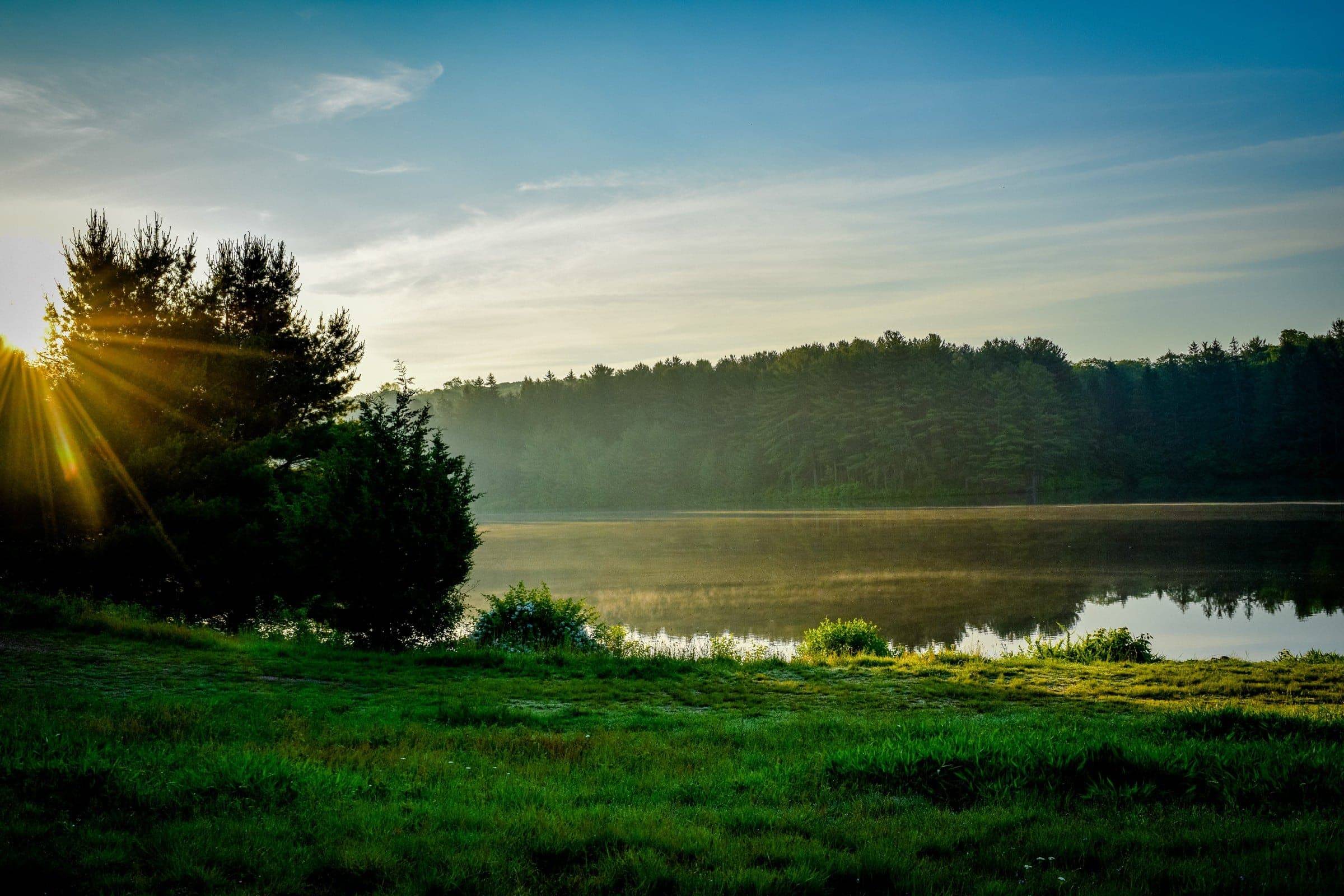Questions that cannot be answered and stories that cannot be told
I’m going to guess nobody mourns but a few invested anthropologists, and maybe me. For the lost stories of humanity. First of all, the people who lived there at the Cahokia Mounds State Historic Site between 1050 and 1350 didn’t call it that. We have no idea what they called it. Or themselves. We call them the Mississippian culture because there’s that big river just right over there. When we got there there were some indigenous peoples called Cahokia. And so we called it that. Why not?
Except for the big mound. We called that monk’s mound. Because some French monks were absolutely going to build a church on the only hill for miles, man-made or not.. And maybe even reclaim a little ground from the old pagan Satan. God knows what debauched heathen rituals those savages did here… and blah. Which could be true, or not. We don’t know. Sure we got stuff, but of their religious, social and political structures? Nada, zilch, zip. Hypothesis? Sure. But anything that could be said, this was so? Nope. That’s the problem when people don’t write shit down in such a way as to stand the test of time. Shame on you un-Cahokians.
There are some interesting theories banging about that culture like this may have had a more fluid social structure than we imagined. The builders of the Cahokia mounds were people transitioning from a hunter gatherer society to agrarian one. They had to have traditions and behaviors strange and unimaginable to us .
Cahokia Mounds Museum
Visited the museum. It was first rate as museums go. I go to a lot of museums and many are just plaque museums. I’m sorry but plaque museums bore the hell out of me. I can’t see well enough to read them so. Give me museums that have stuff I can take pictures of and really cool imaginative paintings that try and visualize the impossible. That being the past. And I think these people who did this museum did a righteous job. Bravo Zulu to you folks.
In any such museum as this, you have to take some of the assumptions that are made in the displays and on the informative text with a certain degree of salt. These people had no written language. Therefore, there’s no cultural record beyond the few artifacts left behind. Scant pieces from which to build a picture of a sophisticated civilization. Any assumptions we make about their social, religious or political organization and structures are that. An educated WAG based on a number of different factors from anthropology and archeology. Or sometimes by whatever woo-woo flights that enter the head of whoever. Perched up there atop Monk’s mound with some sweet sativa. Are they wrong? Who knows. I am not challenging greater minds than mine. But seeking myself to consider possible alternatives to the story of a people we call Mississippians, because we have no idea what they called themselves.
And the assumption applied is that these people had a fixed social structure over an agricultural culture advanced enough that allowed enough free time for artisans to develop. And sure that’s true.
There are some interesting theories banging about that culture like this may have had a more fluid social structure than we imagined. The builders of the Cahokia mounds were people transitioning from a hunter gatherer society to agrarian one. They had to have traditions and behaviors strange and unimaginable to us .
The Crossroads of a continent?
What if, in that strange transition their culture was fluid enough to completely switch social structures seasonally? For example through the winter months there might be a more authoritarian state model, but then that would dissolve and switch back to the small bands of hunter-gatherers, who would then disperse in a months-long quest to feed the people, along with the cadre of agriculturists who stayed behind the farm.
What if there were sophisticated trade networks among the different tribes across the continent? Was Cahokia perhaps a nexus for that network? Where east met west and made the deal? For what? Tools. Other must-have items that only an up and coming agrarian culture with a side of artisans can provide, And possibly with a priestly taxation structure on all that commerce. But only during the season of harvest. Did the Mississippians administer a dissolvable empire that spanned the fertile, central plains of America?
The primary focus of these people was production of food. At its peak this city held a suspected population of 13,000 to 18,000 people. Or approximately the same population as existed in London at the time. It takes a lot of resources to feed that many people all year round. As for the establishment of an artisan culture, that requires free time, which Illinois winter’s provide in abundance to a hybrid agrarian/hunter-gatherer culture. Who ever does just one thing? So farmer person made useful things after the crops were in and the snow was down. Colonial America was built by farner people who did other stuff well when the crops were in and the snow was down. Fact,
Which is why I suspect that a seasonally shifting social model may have been employed there. With the population increasing to full capacity over over the fall and winter. Then largely dispersing in the spring on a quest to feed themselves and bring back what they can. After which they had some massive harvest shindig. Everybody goes to Cahokia for some of what’s there and a grand time was had by all. Without alcohol. but surely somebody had some good weed.
Then folks just get down to the business of winter, making tools and toys for the upcoming year in a three hundred year repeating cycle of stories profane and profound, now lost beneath the soil of ages and the vanished threads of forgotten dreams.
The ponders of time and beyond
This dead city offers me a fertile ground for ponders and wonders and head movies speculating all sorts of mad mind travels.
But who can know these things? Who can decipher the mysteries God holds within the vault of time? Certainly not I.
I walk around these humps that once knew the stories of love and laughter. Of joy and travail. Of courage and sacrifice, of the wisdom and folly of a people beyond imagining who dwelt here. And wherever there are people there are stories. What stories are forever lost perhaps embedded in the memory of this ground.
As I turn away to descend the long staircase from the primary temple mound, I see Aby the Shih Tzu relieving herself on the old dead man city. It probably sings to her inner wolf.
As I scan the photos before my descent I noticed that in one of them I captured the city of St Louis on the horizon. I can’t see well enough to see it from here. But there it is.
I wonder. What makes people think that that city over there has a different fate ahead then the one beneath my feet?
I suppose the real question is will anyone be around to see its remains?
I descend the steps as the seconds fly by me, laughing in derision at, as Henry David Thoreau once wrote, “the folly of those who build railroads.” Or in this case, mounds, or great big honking arches that dominate the landscape. Until next time .
Cheers!
